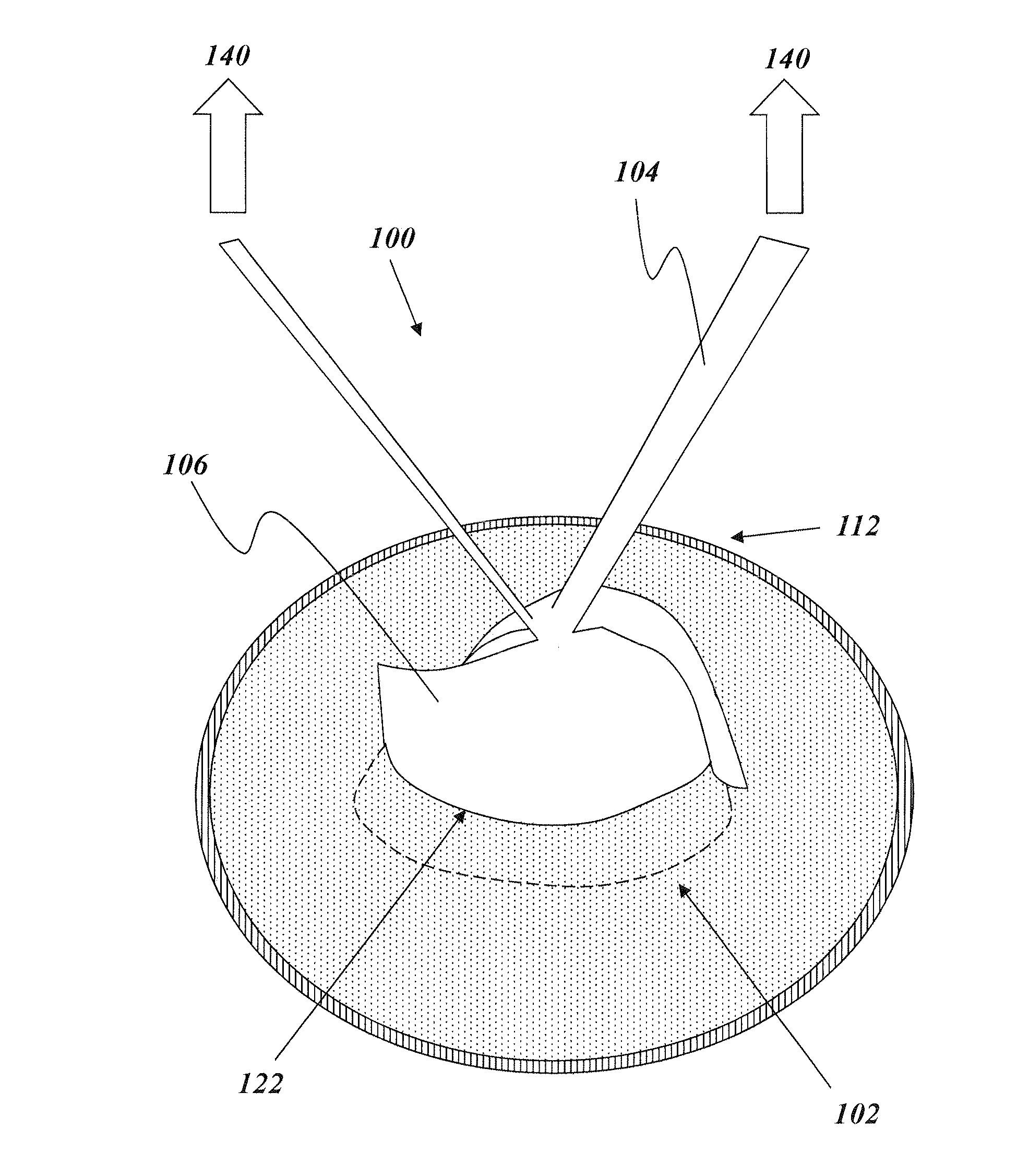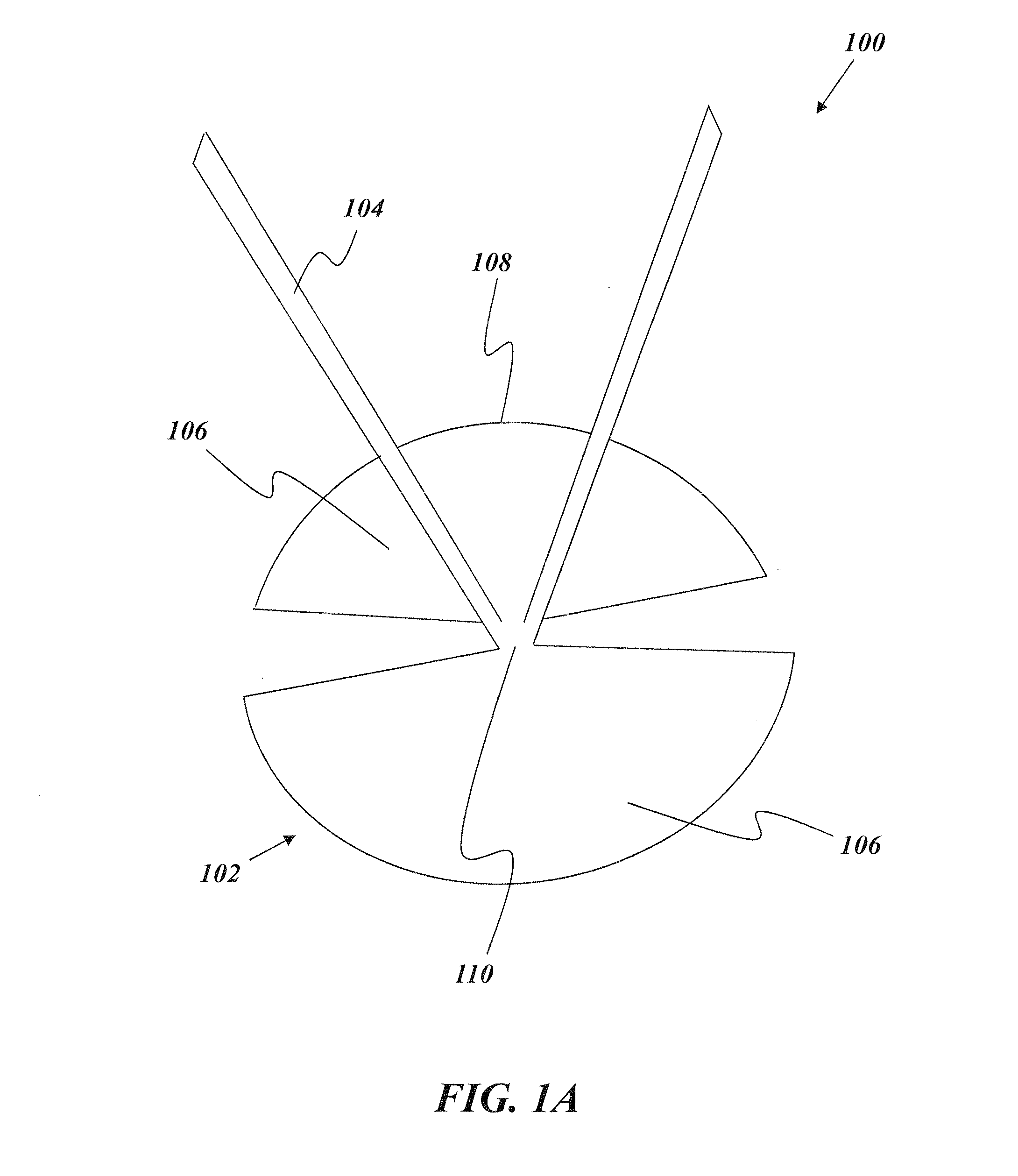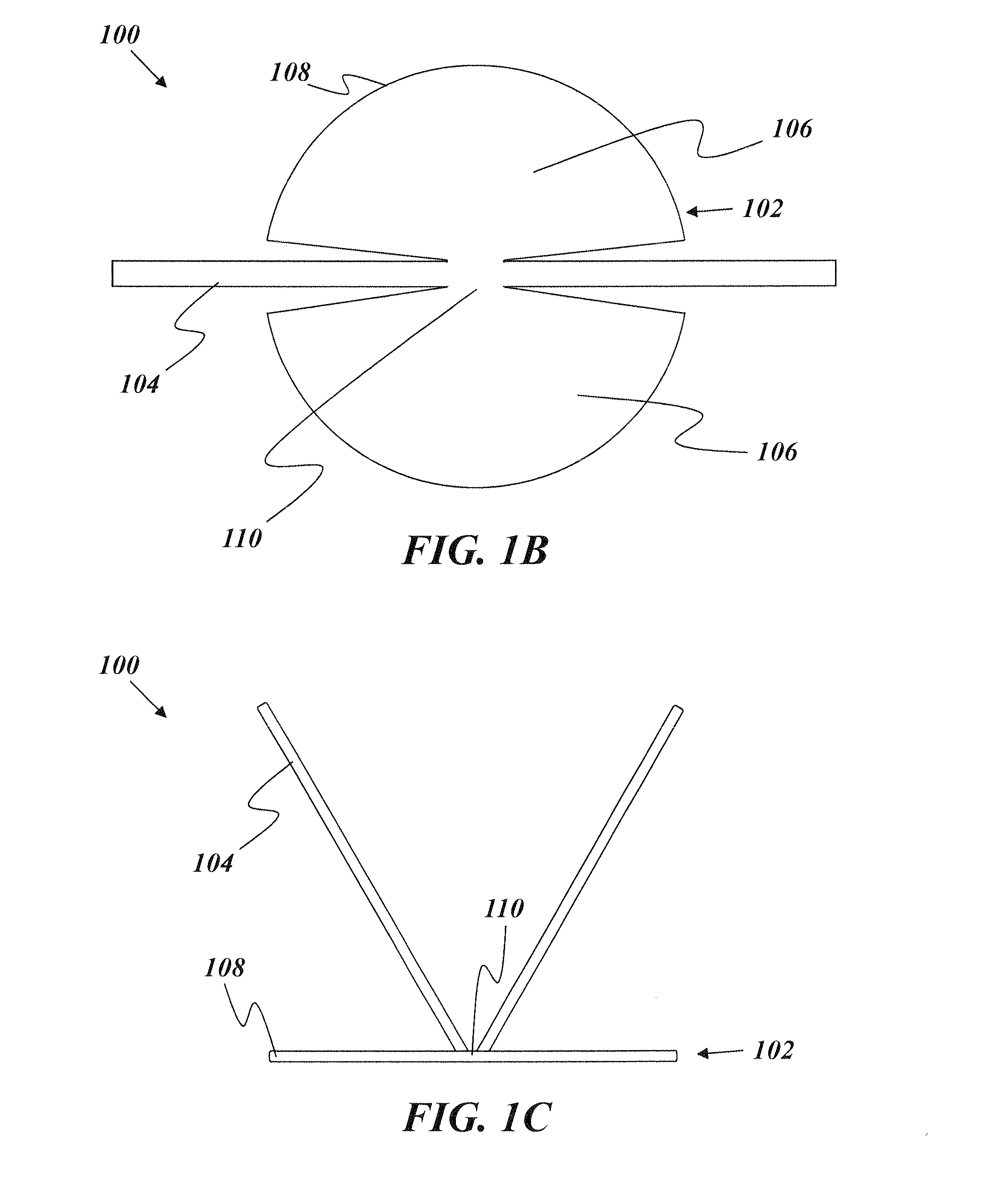Removable deployment device, system, and method for implantable prostheses
a deployment device and hernia patch technology, applied in the field of removable deployment devices, systems and methods, can solve the problems of difficult for adept surgeons, cumbersome manual manipulation of the hernia patch, and even greater challenge in manipulating the hernia patch, so as to reduce the effective diameter, reduce the cross-sectional width of the flexible support structure, and reduce the effective diameter
- Summary
- Abstract
- Description
- Claims
- Application Information
AI Technical Summary
Benefits of technology
Problems solved by technology
Method used
Image
Examples
Embodiment Construction
[0091]An illustrative embodiment of the present invention relates to a deployment device capable of deploying a prosthesis, such as a hernia patch, with a more elegant and efficient design than other conventional deployment devices. The deployment device includes a flexible support structure that fits at least partially within an enclosure of the prosthesis, such as one or more pockets in the prosthesis formed by two stacked layers adjoined at a peripheral edge thereof. The flexible support structure has an elasticity that is sufficient to cause the prosthesis to deploy after implantation (e.g., by causing the prosthesis to independently assume a deployed, e.g., generally planar, shape after being implanted in a rolled or otherwise deformed configuration) and a flexibility sufficient to enable bending, folding, or otherwise assuming a collapsed or distorted configuration for removal from the prosthesis. In particular, the flexible support structure can have a flexibility sufficient ...
PUM
 Login to View More
Login to View More Abstract
Description
Claims
Application Information
 Login to View More
Login to View More - R&D
- Intellectual Property
- Life Sciences
- Materials
- Tech Scout
- Unparalleled Data Quality
- Higher Quality Content
- 60% Fewer Hallucinations
Browse by: Latest US Patents, China's latest patents, Technical Efficacy Thesaurus, Application Domain, Technology Topic, Popular Technical Reports.
© 2025 PatSnap. All rights reserved.Legal|Privacy policy|Modern Slavery Act Transparency Statement|Sitemap|About US| Contact US: help@patsnap.com



